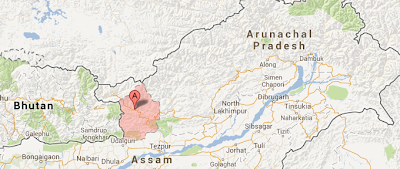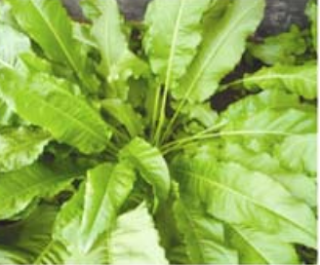An ongoing road extension project near Aka
Hills in Arunachal Pradesh in India may wipe out a rare medicinal plant found
only in the Aka Hills, fears botanists working in the area.
 | |
| Aka Hill race of Gaultheria akaensis (Photo Courtesy: Dr.Subhasis Panda) |
“Since
its discovery in 2002 (December), only one small population observed near left
bank of the Bridge, 3 Km from Nechephu 27 KM toward Tenga Valley in Aka Hill area.
”, he says. Now the population has declined. Field surveys conducted by
scientists at the Botanical Survey of India and Forest Department of Arunachal Pradesh since 2002 have failed to locate a second population of the same race
of the plant elsewhere, said he.
According
to him, the new Highway Extension project carried out by the Border Roads
Organisation (BRO) in the area, threatens the only known habitat of the plant.
Present threats
According
to a recent research paper published in the Journal of
Threatened Taxa, the threats to the
plant are multi-fold. The extension of the highway “has already started from
the Bhalukpong area and is proceeding towards Aka Hill area.” says the study.
Moreover, a hydroelectric project coming up in the area is also a severe threat
to the existence of the plant, it says.
According
to the research paper, detailed explorations in the Aka Hills and neighboruing
countries like Nepal, Bhutan and China has failed so far to report the plant.
Currently, only two plants of the species are known to survive. Very less seed
germination in the small population has already put the plant under threat
while the habitat destruction has added to the rate of decline.
The Darjeeling race
However,
according to botanists, another race of the plant is present in Darjeeling
hills, though they are not the exact race found in Aka Hills. Diplycosia
indica, a plant found in Darjeeling, was earlier believed to be a separate
species, but later identified as another race of Gaultheria akaensis.
 |
| Location of West Kameng district in Arunachal Pradesh |
Existence
of different races does not decrease the threat to the Aka Hill race, say
experts. There is a “need to conserve both races, but
conservation of Arunachal race is urgently required”, says Dr. S. Panda.
Medicinal
properties
Aka Hills situated in the West Kameng District is inhabited by Aka tribes. The tribes use the plant for
therapeutic purposes. According to the study in the journal, the tribes mix the
leaf extract of the plant with that of another plant to treat rheumatic and
sciatic pain. “Tender leaf extract [of the plant] mixed with G.
fragrantissima leaves (1:1) applied to cure acute rheumatic and sciatic
pain by the Akas”, says the study.
“Aka tribes used extract of leaves of this
plant to cure rheumatic pain earlier. Now, they are not getting this plant for
their use. But earlier (as per elderly tribal people at Jamiri) Akas used this
plants. During that time the plant was abundant in and around Aka Hill area
(may be 200-300 years ago)”, says Dr. S Panda
Possible
alternatives
Though the road project is yet to reach the
area where the plants exist, the threat is imminent, say researchers. However, according
to them, making slighter change to the present extension plan can help save the
plants. Instead of going for the present extension project, BRO may try
repairing the earlier road stretch, suggests the researcher.
“As the whole Aka Hill area is harbouring
more than 500 Threatened taxa, so for the purpose of effective conservation,
BRO should avoid road extension from SESSA to JAMIRI (40 KM), instead they can
repair the earlier road without extension”, said Dr. S Panda.
The presently proposed extension works may damage this area of high
biodiversity significance, he added.
However, BRO officials were unavailable for
comment. A mail sent to their official id was left unanswered. (We will update
the story, once we get any response. Stay tuned.)




